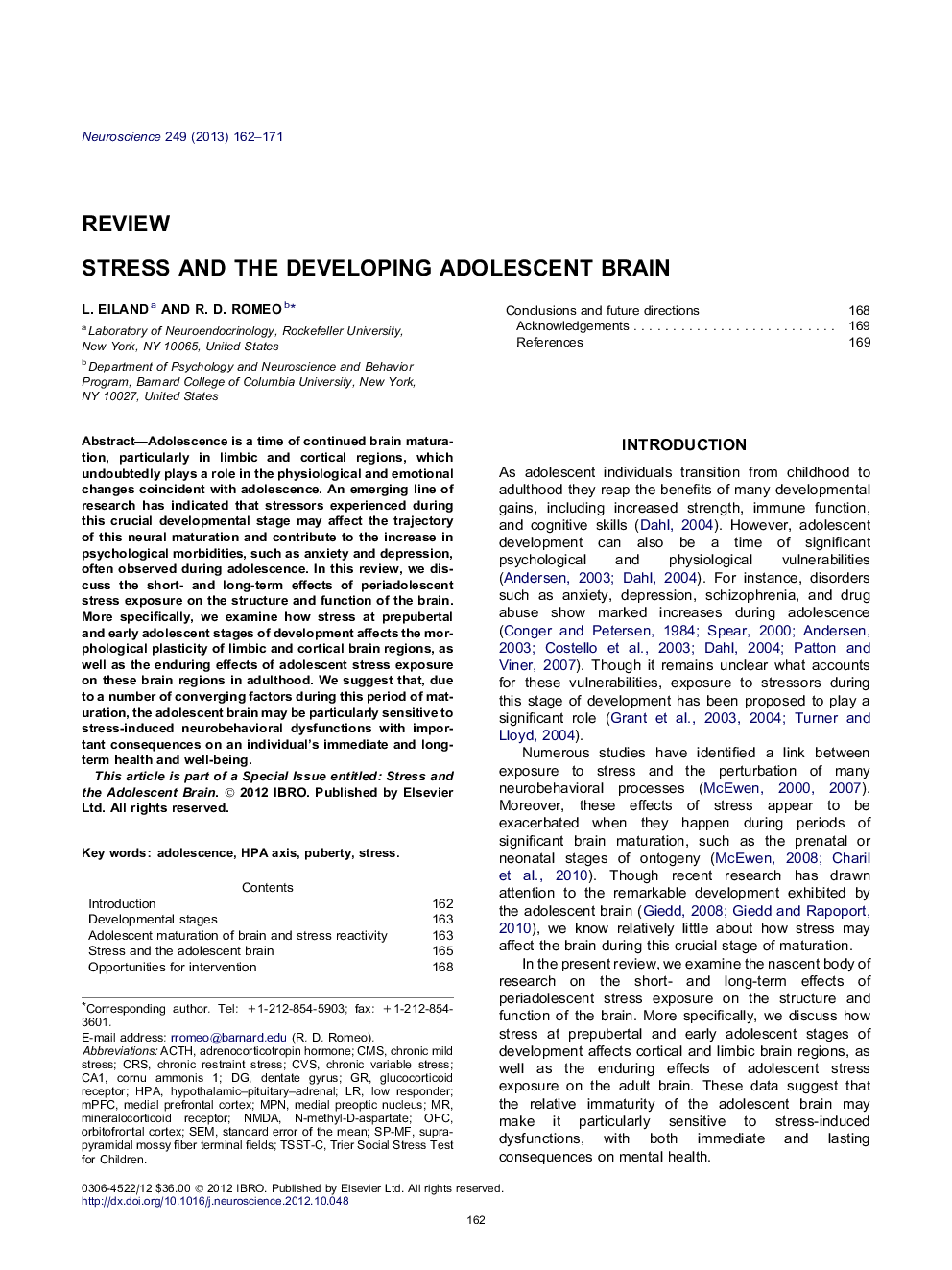| Article ID | Journal | Published Year | Pages | File Type |
|---|---|---|---|---|
| 4337898 | Neuroscience | 2013 | 10 Pages |
Adolescence is a time of continued brain maturation, particularly in limbic and cortical regions, which undoubtedly plays a role in the physiological and emotional changes coincident with adolescence. An emerging line of research has indicated that stressors experienced during this crucial developmental stage may affect the trajectory of this neural maturation and contribute to the increase in psychological morbidities, such as anxiety and depression, often observed during adolescence. In this review, we discuss the short- and long-term effects of periadolescent stress exposure on the structure and function of the brain. More specifically, we examine how stress at prepubertal and early adolescent stages of development affects the morphological plasticity of limbic and cortical brain regions, as well as the enduring effects of adolescent stress exposure on these brain regions in adulthood. We suggest that, due to a number of converging factors during this period of maturation, the adolescent brain may be particularly sensitive to stress-induced neurobehavioral dysfunctions with important consequences on an individual’s immediate and long-term health and well-being.
► Adolescent development is marked by continued maturation of the brain. ► Adolescence in also a time of substantial shifts in stress reactivity. ► The interaction of stress and adolescent brain development is discussed. ► This interaction may mediate the adolescent-related increase in psychopathologies.
